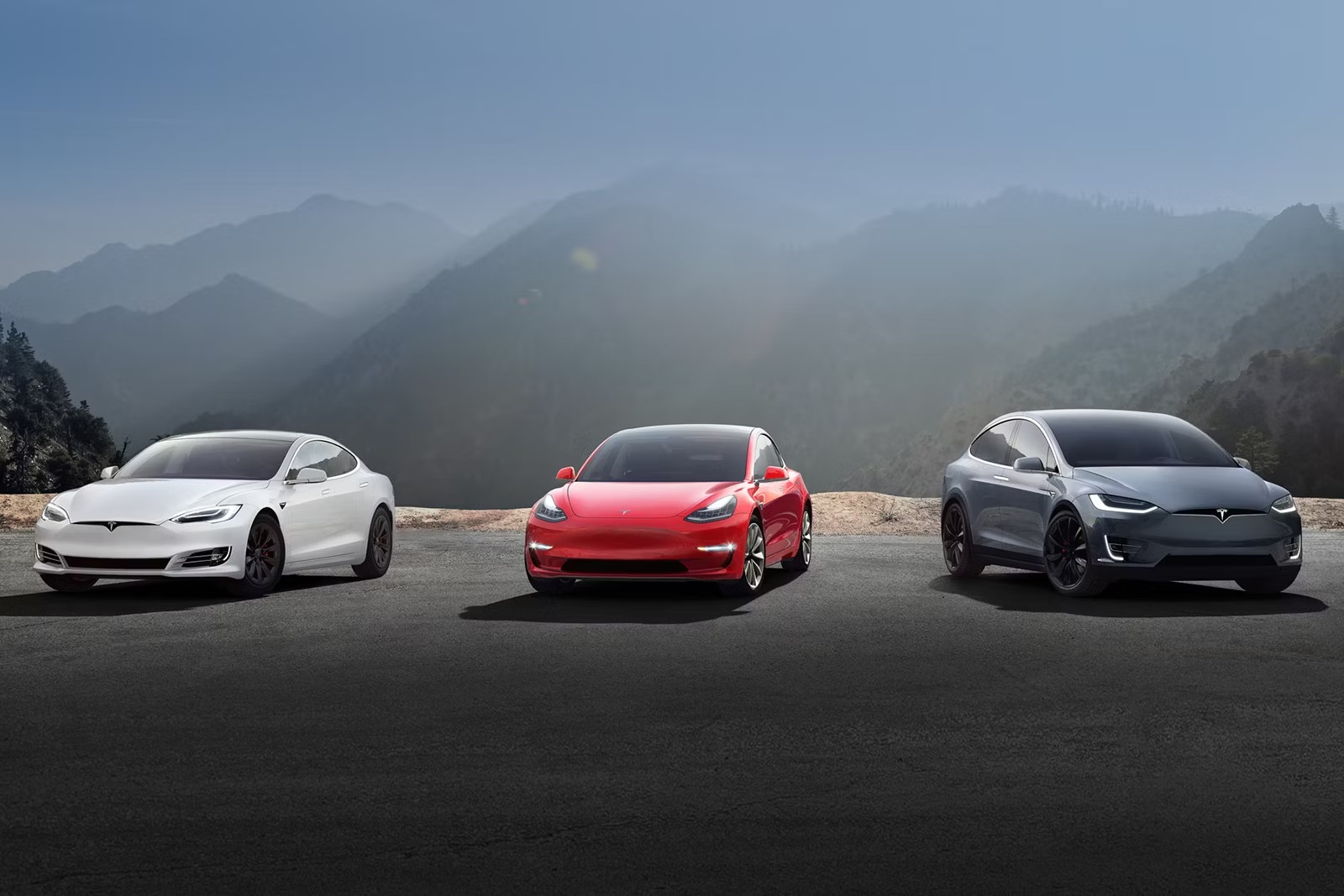
Neden Tesla rakiplerinin bu kadar ilerisinde?
Twitter, Instagram, YouTube ve Keyfini Sür podcast'inde yaptığım yayınlarda sık sık şunu ifade ediyorum: Tesla, elektrikli araçlar söz konusu olduğunda tüm sektörün fersah fersah ilerisinde ve rakiplerinin onu yakın gelecekte yakalaması çok güç. Gelin bunun sebeplerini birlikte irdeleyelim:
Tesla'nın ilk elektrikli modeli Roadster, 2008'de piyasaya çıktı. Geleneksel otomotiv sektörünün en önde gelen firmalarından Mercedes ise, ilk EV'si olan EQC'yi 2018'de tanıttı.
Tesla sektörün ilerisinde çünkü basitçe onlardan yaklaşık 10 sene önce EV üretmeye başladı. Aracın kendisinden de ziyade, batarya teknolojisine çok büyük yatırımlar yaptılar; arabalar yanında pillerin de imal edildiği devasa Gigafactory'lerin her biri neredeyse 10 milyar dolara mal oluyor ve şirkete ait bunlardan 6 tane var. Diğer markalar gibi bataryaları sipariş vermek yerine, ortakları Panasonic ile birlikte, arabalarla aynı anda geliştirip üretiyorlar.
2 . Supercharger ağı
Tesla'ya ait şarj istasyonları olan 'Supercharger'lar, dünyanın çoğu ülkesinde diğer şarj istasyonlarından daha yaygın (toplamda 50.000+ adet), istasyon başına düşen şarj cihazı sayısı daha fazla (en az 12, genelde 20+), daha sorunsuz-pürüzsüz-hızlı çalışıyorlar (farklı uygulamalar indirip ayrı ayrı kredi kartı girmeye gerek yok; hepsi DC ve 72–250kW arası güç sunuyorlar) ve daha ucuzlar (İngiltere'de halka açık DC istasyonlarda ücret 79p/kWh, Supercharger'larda 67p/kWh).
3 . Verimlilik
Genelde üreticiler EV modellerinin menzilini artırmak için daha büyük batarya kullanıyorlar, ancak batarya kapsitesiyle menzil doğru orantılı artmıyor. Yani iki kat büyük pile sahip bir EV aldığınızda menzil belki %50 artıyor (çünkü araç ağırlaşıyor), fakat her tam şarjda cebinizden %100 daha fazla para çıkıyor. Bu noktada, devreye verimlilik kavramı giriyor.
Verimlilik km/kWh olarak ölçülüyor, yani birim şarj ile ne kadar yol kat edebildiğiniz anlamına geliyor. Bu konuda Tesla'lar rakiplerinden çok üstün:
What Car'ın testine dayanan bu tabloya göre örneğin, bir Tesla 3 sahibiyseniz, 100 km yol almak için elektriğe ödediğiniz ücret bir BYD Seal sahibinden %26 daha az.
4 . Hafiflik
Tesla mühendisleri kendilerini ağırlığı azaltmaya, supercar üreticilerine benzer bir düzeyde adamış durumda. Burada, onlarca yıldır belli kalıplarla üretim yapan köklü markaların aksine Tesla'nın çok daha esnek ve çevik bir girişim olmasının da payı büyük: Bir yanda her bileşeni sıfırdan düşünüp tasarlama, kendi başına yapma ve dikey entegrasyon; diğer yanda parçaları dışarıdan satın alıp birleştirme ve gelenekleri sürdürme hali.
Bir örnek: Tesla'lardan harici bir ısıtıcı yok, gereken ısıyı motordan sağlıyorlar. Kabini ısıtmak ve soğutmak için iki ayrı devre yerine tek devre kullanılıyor. Bu gibi çözümler sayesinde bir Model 3 1835kg'yken, rakipleri Polestar 2 1940kg, BMW i4 2125kg, VW ID.7 2175 kg, BYD Seal 2260kg.
5 . Yazılım
Modern otomobillerin en yaygın sorunlarının başında kabin arayüzlerinin ağır işleyişi ve dikkat dağıtacak düzeyde zor kullanımı, ardından da şerit takip sistemi gibi aktif güvenlik sistemlerinin düzgün çalışmaması geliyor. Bunların hepsi yazılımsal sorunlar ve bu açıdan Tesla, temelde otomotiv değil bir teknoloji şirketi olduğu için, büyük fark yaratıyor. Menüleri cep telefonu hızında çalışıyor, tüm temel işlevler elinizin altında ve kamera-sensör-radarlardan gelen veriler çok daha akıllıca işlendiği için, sürüş destek sistemleri de bir o kadar akıllı çalışıyor.
Tesla'larda Apple CarPlay ya da Android Auto bile bulunmuyor, telefon ile bağlantıyı kendi yazılımları gerçekleştiriyor çünkü ekosistemlerine dışarıdan müdahale istemiyorlar.
6 . Dikey entegrasyon
Tesla'yı borsada değerleme konsunda Apple, Google, Amazon gibi şirketler seviyesine çıkartan başlıca faktör, dikey entegrasyon; yani tedarik zincirindeki hemen her basamağı üstlenmiş ve sahiplenmiş olmaları. Cybertruck'ın 4680 kodlu batarya hücreleri, Tesla'nın bizzat kendi üretimi ve Model 3'teki Panasonic'le ortak geliştirdikleri 2170 kodlu hücrelerden hem daha fazla enerji muhafaza ediyor, hem daha fazla güç üretiyor, hem daha az ısınıyor, hem de daha ucuza mal oluyor. Pil dışında motor, yazılım, donanım, bayi, servis ağı, şarj istasyonları... Hepsi kendilerine ait. Bu sayede hem bileşenlerin birbiriyle uyumu artıyor, hem de maliyetler azalıyor.
7 . Otonom sürüş
Geçtiğimiz günlerde Tesla'nın otonom sürüş yazılımı olan Autopilot’ın 12. versiyonu yayımlandı ve kullananlar, zaten tüm rakiplerinin ilerisinde olan önceki sürümlerden çok daha başarılı olduğunu söylüyor. Peki neden?
Bir Tesla AI mühendisi olan Dhaval Shroff, geçtiğimiz senenin Aralık ayında markanın FSD (tam otonom sürüş) sistemini geliştirmek için bir öneride bulunuyor. Geleneksel olarak Tesla'da FSD, diğer markalarda olduğu gibi önceden belirlenmiş sabit bir kural setine dayanarak çalışıyor. Shroff ise, bir tür 'sinir ağı planı'na geçilmesini öneriyor. Bu sistem, aynı ChatGPT gibi, gerçek zamanlı sürüş verileri toplayarak sürekli adapte oluyor ve kendini geliştiriyor. Milyonlarca sürücünün tepki ve davranışlarını video kayıtları aracılığıyla toplayan sistem, 5 yıldızlı Uber sürücüleri gibi güvenliği kanıtlanmış örnekleri analiz ederek, zaman zaman kuralları çiğnemesi gerekse bile, kazaya sebebiyet verebilecek karmaşık durumlarla insan gibi başa çıkabilmeyi öğreniyor.
Elon Musk bu teklifi kabul etti ve şu an Autopilot bu şekilde çalışıyor.
8 . Fiyat
Tesla EV'lerin 'piyasa yapıcı'sı. Diğer üreticiler fiyatlarını Tesla'lara dayanarak belirliyor ve Elon Musk, düşük maliyetleri sayesinde modellerine arka arkaya indirim uygulayabilirken, rakipleri bu konuda çok zorlanıyor çünkü maliyetleri kurtarmıyor. Eğer Model 3 gibi dört dörtlük bir EV $40.000'a satlıyorsa, sizin çoğu açıdan ondan zayıf bir modeli daha pahalı fiyatlandırmanız mümkün değil.
Eski bir Tesla çalışanı ve Model S'in baş mühendisi Peter Rawlinson tarafından kurulan Lucid, örneğin Air Sapphire modeliyle Model S'i hemen her açıdan geride bırakmayı başarıyor. Ancak bunu yapabilmek için, onun neredeyse iki katı fiyata satılıyor.


5 Yorum